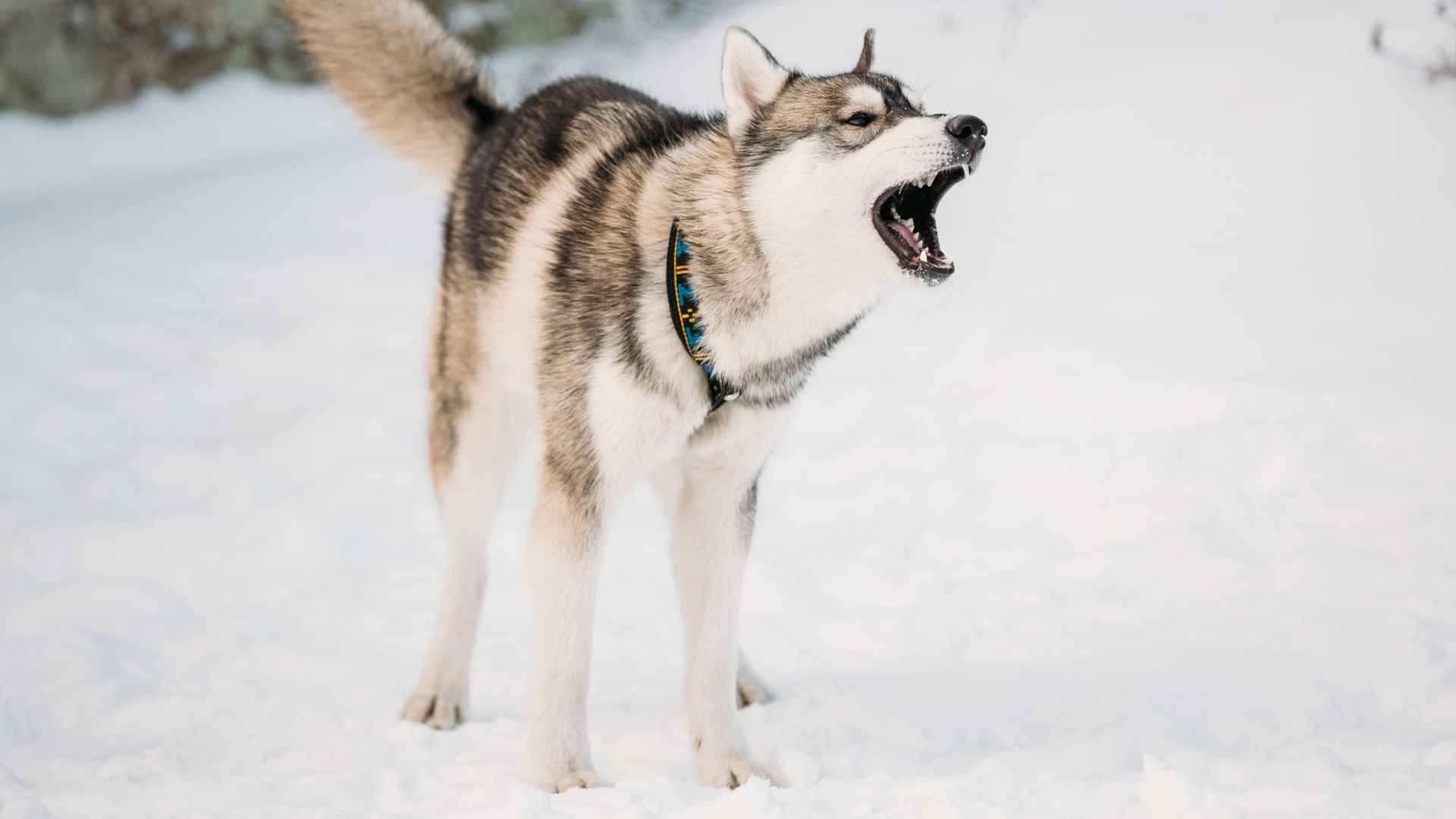When it comes to canine aggression, the truth is more complex than appearances or breed stereotypes. While certain dog breeds have been historically linked to aggressive behavior, it’s important to understand that aggression is shaped by both genetics and environment. A dog’s background, whether it was bred for guarding, herding, or hunting, can play a role in its behavior. But without proper training, socialization, and care, any breed has the potential to display aggression.
Some breeds may show a stronger tendency toward assertiveness or territorial instincts simply because of their original roles. However, this does not make them inherently dangerous. Dogs that lack mental stimulation, consistent boundaries, or social exposure are more likely to react with fear, frustration, or dominance. This is where responsible ownership makes all the difference.
In this article, we’ll explore aggressive dog breeds not to stigmatize them, but to better understand why these tendencies may occur and how proper training, early socialization, and dedicated care can turn even the most misunderstood breeds into trustworthy and well-adjusted companions.
Aggressive Dog Breeds
1. Akita
Majestic and powerful, the Akita is a dignified breed with deep roots in Japan, where it has long been revered as a symbol of protection and good fortune. Originally bred in the mountainous regions of northern Japan, Akitas were tasked with guarding, hunting, and even policing, roles that shaped their naturally defensive instincts.
Today, this large, double-coated spitz-type breed stands 23 to 28 inches tall and can weigh between 60 and 100 pounds, making its presence both physically imposing and emotionally commanding.
Temperament
Akitas are famously loyal to their families but often exhibit aloofness or suspicion toward strangers. This wariness, combined with a strong prey drive and dominant personality, can translate into aggression, particularly toward other dogs of the same sex. According to the AKC, Akitas are smart and devoted dogs, but they also possess a strong-willed and independent streak.
Due to their size and strength, early and consistent training from a young age is essential to prevent territorial or reactive behaviors. They do best with experienced dog owners who can provide firm, consistent leadership and controlled environments. Their protective instincts are strong, and without proper training, they may perceive unfamiliar people or animals as threats.
Fact: Akitas are naturally clean and quiet, but due to their independent streak and intolerance toward unfamiliar dogs, they should never be let off-leash in unsecured areas.
2. Siberian Husky
With their piercing eyes, thick coats, and wolf-like appearance, Siberian Huskies often captivate onlookers at first glance. Bred in Siberia to pull sleds across frozen landscapes, these energetic and resilient dogs are known for their endurance and intelligence. Weighing between 45 and 60 pounds and standing 21 to 24 inches tall, Huskies are medium-sized working dogs that thrive in active households.
Britannica notes that, true to its background in long-distance sled racing, the Siberian Husky is an energetic breed that requires a minimum of one to two hours of daily physical activity. Their charming, friendly demeanor has made them a favorite among families, but under the surface, their needs must be met to prevent behavioral issues.
Temperament
Naturally outgoing and pack-oriented, Huskies are not typically aggressive toward humans, but their independence and high energy can lead to unwanted behaviors if they’re bored or under-stimulated. Without proper training and regular mental and physical challenges, frustration may manifest in digging, howling, nipping, or guarding tendencies.
Their intelligence can also come across as stubbornness, making consistency in training essential. While not inherently aggressive, Huskies require structure, clear leadership, and lots of engagement to remain well-adjusted and sociable.
Fact: Though Huskies are generally gentle, a lack of exercise and stimulation can trigger destructive behaviors, often mistaken for aggression.
3. Rottweiler
Originating in Germany, the Rottweiler is a powerful working dog once known as the “Rottweiler Metzgerhund” or butcher’s dog, tasked with herding cattle and pulling meat carts. Weighing up to 130 pounds and standing up to 27 inches tall, this muscular breed was built for endurance, intelligence, and protection.
According to Petplan, the Rottweiler is a powerful, well-built dog known for its loyalty and innate protective nature. Their natural guarding instincts, combined with their confident demeanor, have led to a reputation for aggression, but that image often misrepresents their true nature.
Temperament
Rottweilers are intelligent, loyal, and devoted companions, but their protective instincts can turn problematic without proper training and socialization. This is one of the most aggressive dog breeds and requires responsible pet ownership. Their assertive personality requires strong leadership and consistent guidance from an early age.
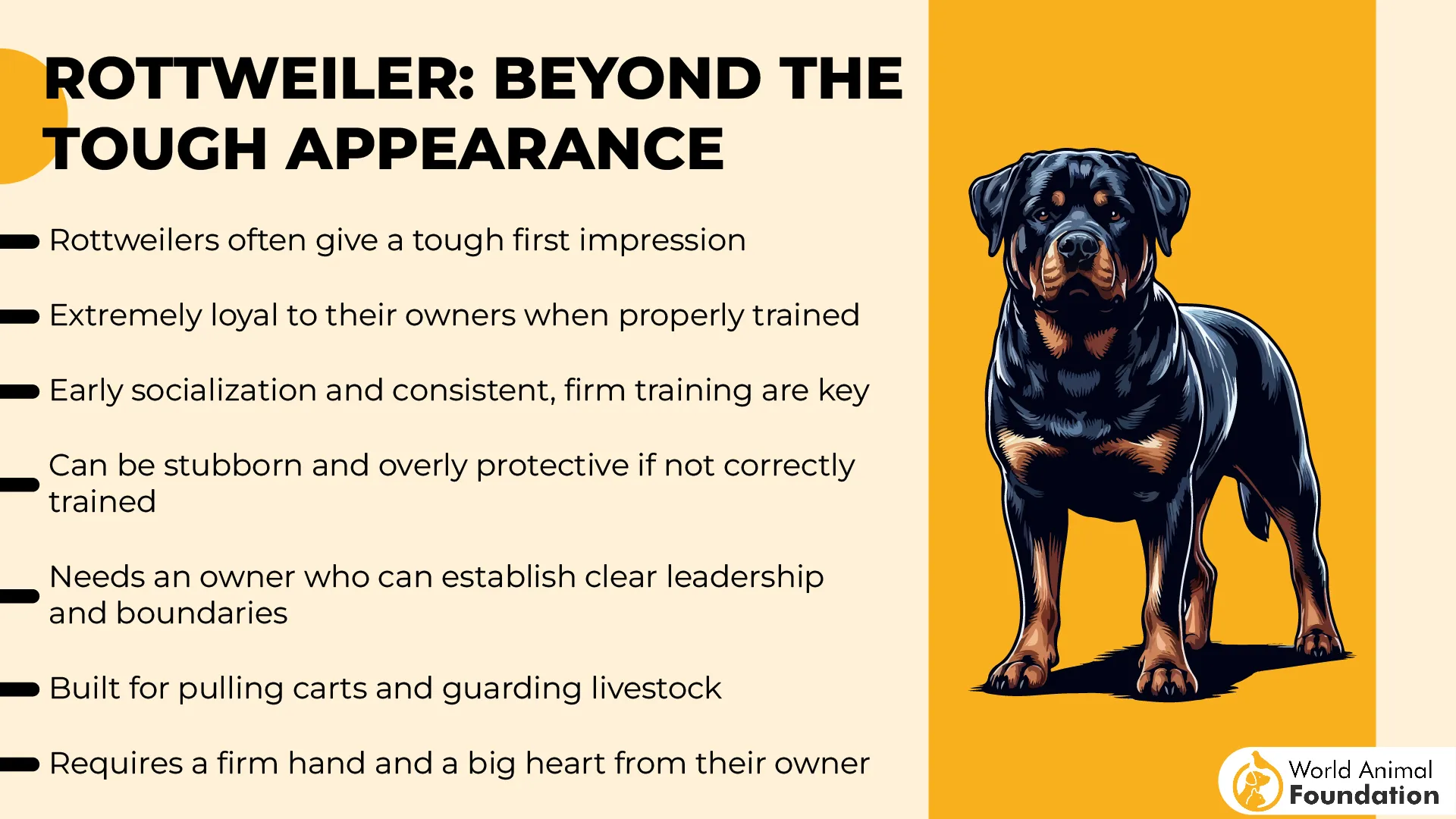
When left alone for extended periods, deprived of exercise, or improperly trained, Rottweilers may become frustrated, territorial, or overly vocal. However, in a well-structured home environment, they are affectionate, steady, and even gentle, especially with their families.
Fact: Although often labeled as aggressive, Rottweilers are not inherently dangerous; most behavioral issues arise from neglect, lack of stimulation, or poor socialization rather than breed disposition.
4. Chihuahua

Don’t let their petite size fool you, Chihuahuas pack a punch when it comes to attitude. As the world’s smallest dog breed, typically weighing between 2 to 7 pounds and standing just 6 to 9 inches tall, these compact canines are spirited, expressive, and fiercely loyal.
With roots tracing back to ancient pre-Columbian civilizations, the Chihuahua is a cultural icon of Mexico and one of the oldest breeds in the Americas. Known for their oversized personalities, they often walk with the confidence of dogs ten times their size.
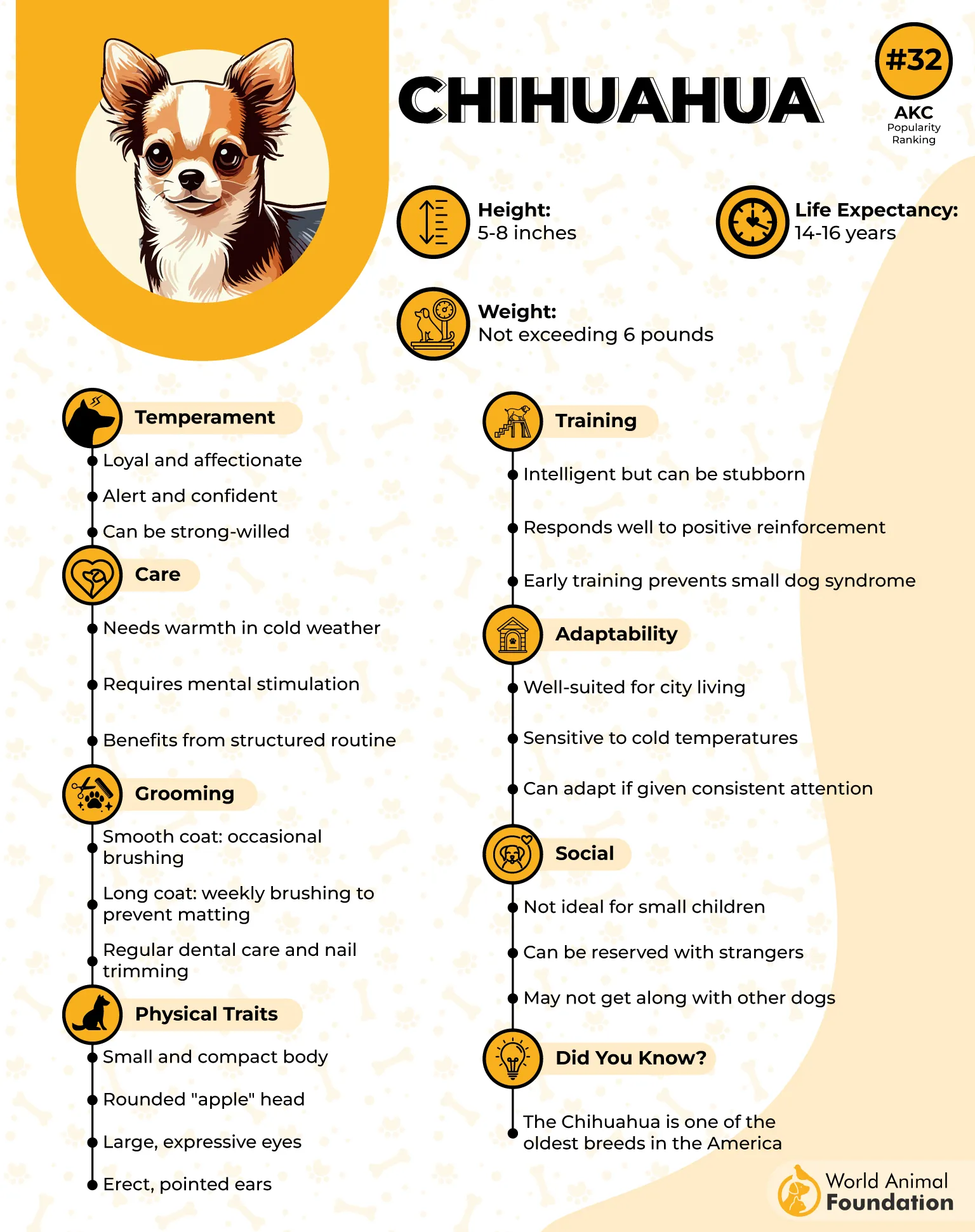
Temperament
Chihuahuas form intense bonds with their owners, which can sometimes manifest as possessiveness. While they’re deeply affectionate, their loyalty may evolve into jealousy, particularly around strangers or other pets. This can lead to defensive behaviors such as snapping or excessive barking.
Their terrier-like confidence and alertness also contribute to their tendency to react quickly to perceived threats. They often exhibit aggressive tendencies. Without consistent training and early socialization, these tiny watchdogs can become domineering and difficult to manage.
Fact: Chihuahuas may be lap-sized, but their big-dog attitude, fueled by loyalty and protectiveness, can make them surprisingly prone to aggressive behaviors.
5. American Pitbull Terrier
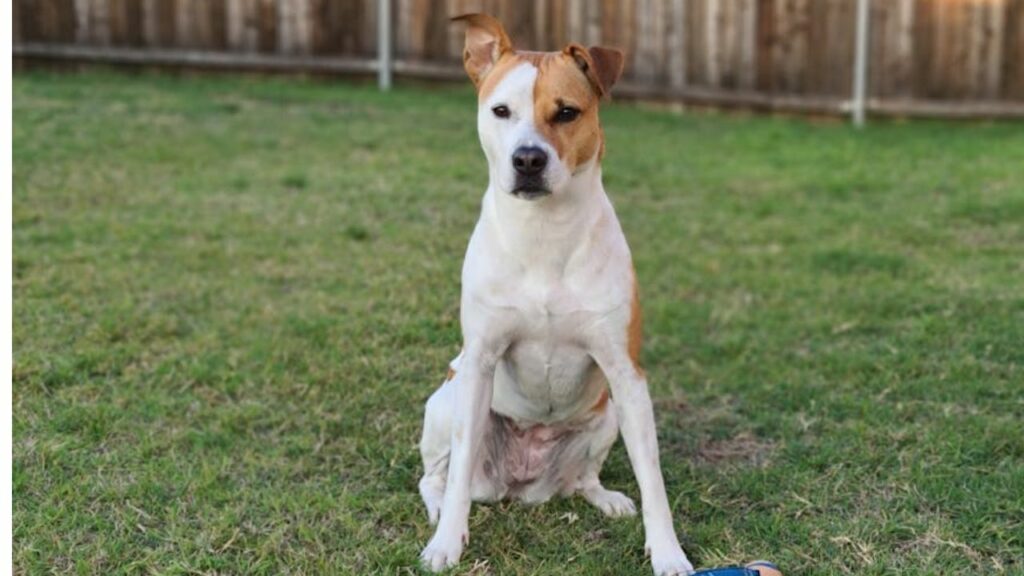
Often misunderstood, the American Pit Bull Terrier has long been the subject of debate due to its muscular build, strong-willed nature, and historical association with dog fighting. Weighing between 35 to 60 pounds and standing 18 to 21 inches tall, this breed is powerful, energetic, and highly determined.
Originally bred for strength and tenacity, these traits, without proper structure, can manifest as aggression or behavioral issues, particularly in under-socialized or poorly trained dogs.
Temperament
Despite their reputation, this aggressive breed is naturally affectionate, loyal, and often quite playful with their families. Their intense loyalty and “Velcro dog” behavior, sticking close to their people, make them loving companions when raised with proper guidance.
However, their determination and high energy can lead to aggressive canine behavior if they are not given consistent training, mental stimulation, and firm leadership. Early socialization is crucial to help them channel their energy in a positive way and reduce reactivity toward unfamiliar people or animals.
Fact: When well-socialized, Pit Bulls are often great with children and other family pets, though they still require supervision due to their strength and enthusiasm.
6. Chow Chow
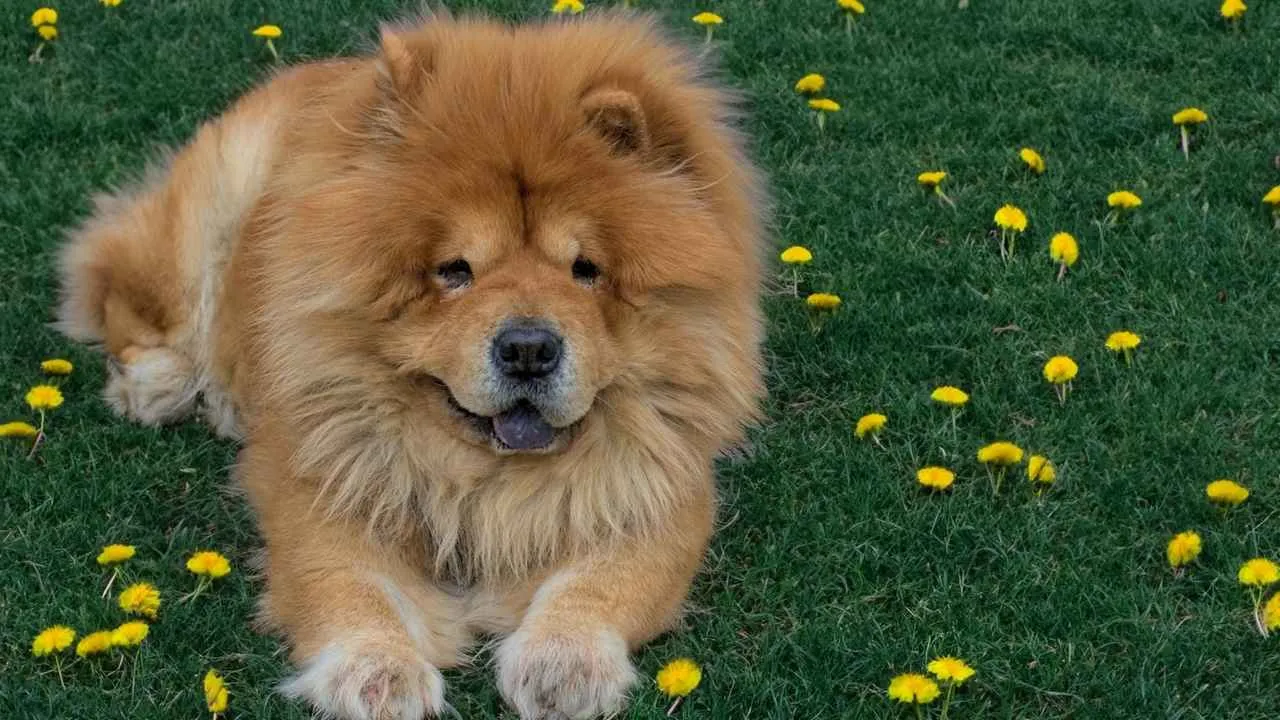
With its lion-like mane and stoic expression, the Chow Chow carries an air of nobility and mystery. Originating in China, this sturdy breed was historically used for hunting and herding, tasks that demanded confidence, independence, and a certain degree of dominance.
Weighing between 40 and 90 pounds and standing 17 to 22 inches tall, these hunting dogs are compact yet powerful, with a dense double coat that adds to their commanding presence.

Temperament
Chow Chows are famously independent and reserved, often forming strong bonds with their primary caregiver while remaining aloof with strangers. This naturally guarded nature, combined with high intelligence and a low tolerance for unfamiliar people or animals, can sometimes manifest as aggression, especially without proper socialization.
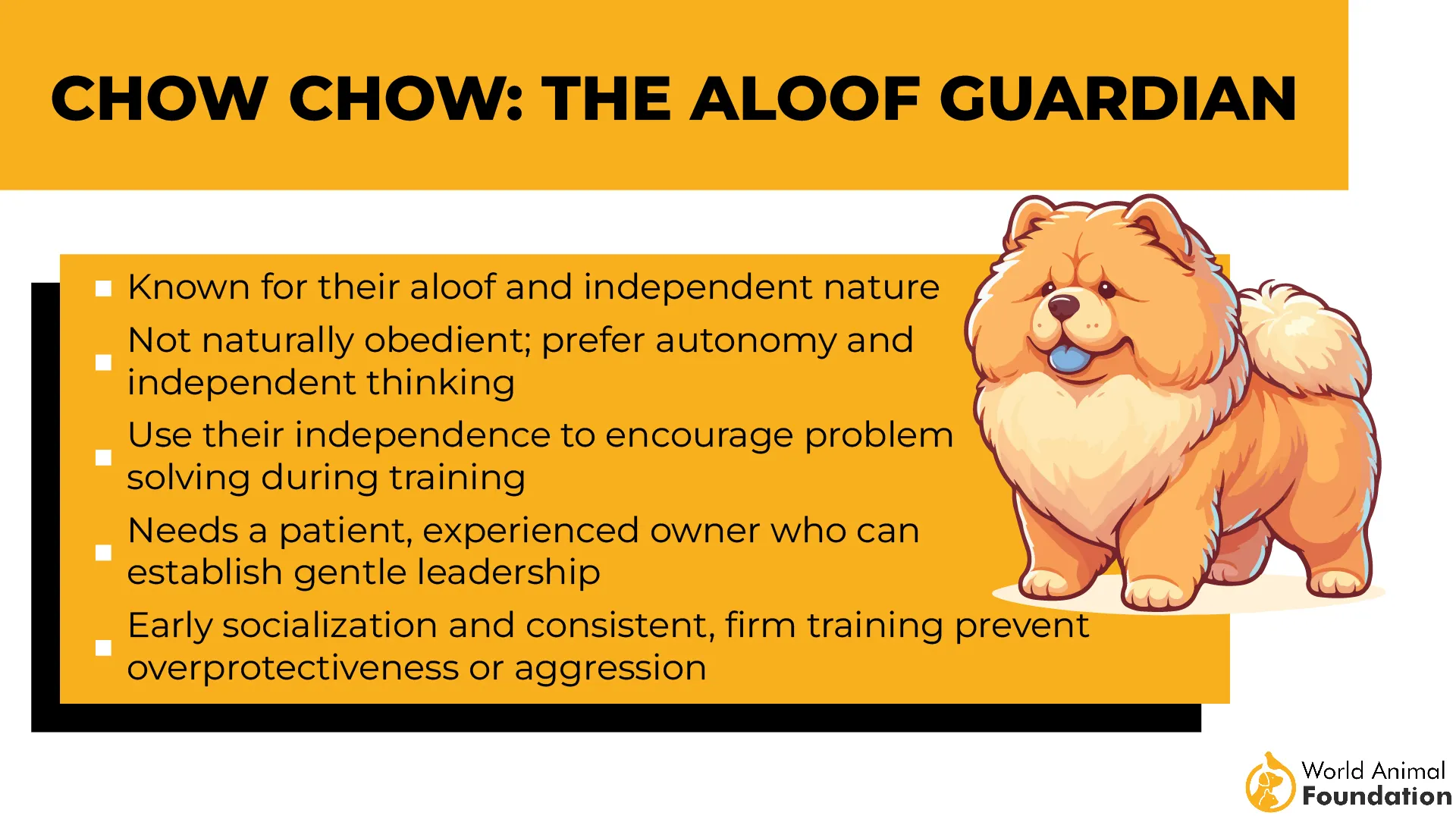
While not outwardly affectionate, they are intensely loyal and protective, which can be misinterpreted as standoffish or hostile. Consistent training and early exposure to various environments are essential to help a Chow Chow become a well-adjusted companion.
Fact: Despite their calm demeanor, Chow Chows are known for their dominant personality, a trait that helped them excel in both hunting and herding roles throughout their history.
7. Doberman Pinscher
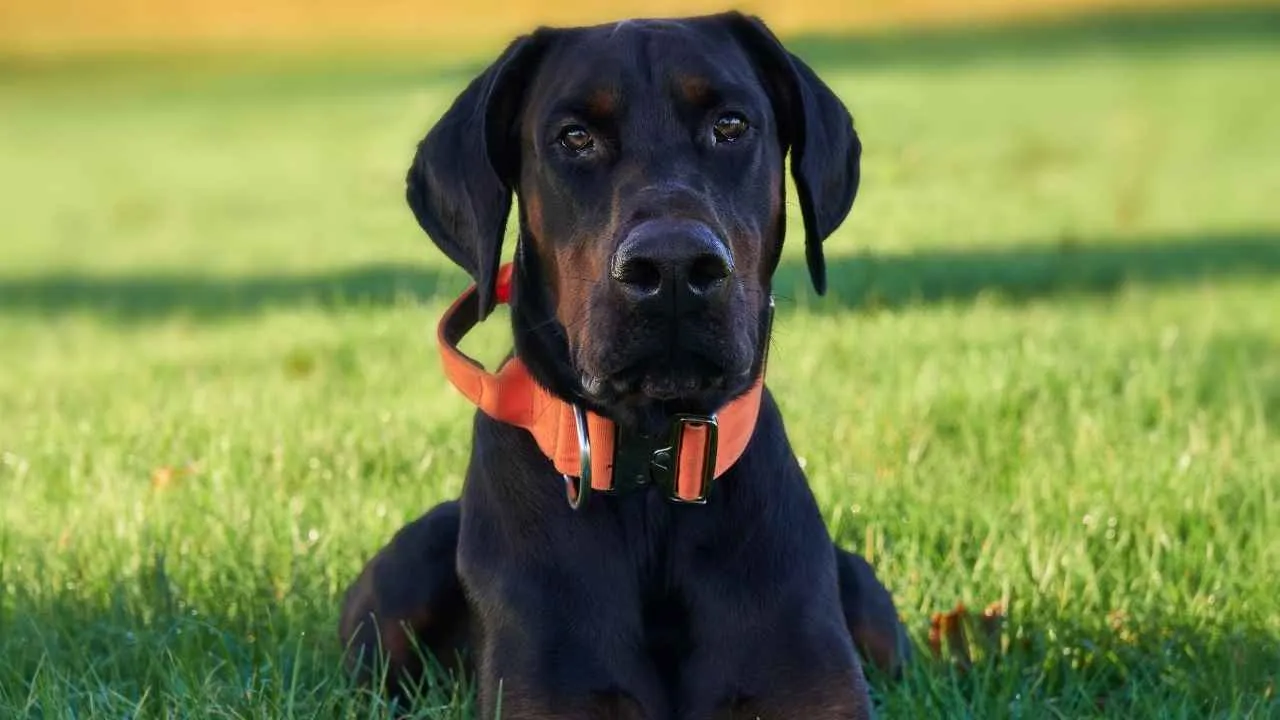
The Doberman Pinscher, developed in Germany by tax collector Louis Dobermann, is one of the most recognized protection dogs in the world. With a striking silhouette, muscular build, and sharp intelligence, this breed is built for strength, speed, and precision.
Weighing between 60 to 100 pounds and standing 24 to 28 inches tall, the Doberman’s athletic frame and confident posture command immediate respect. Bred for guarding, they have a natural inclination to protect their home and family.
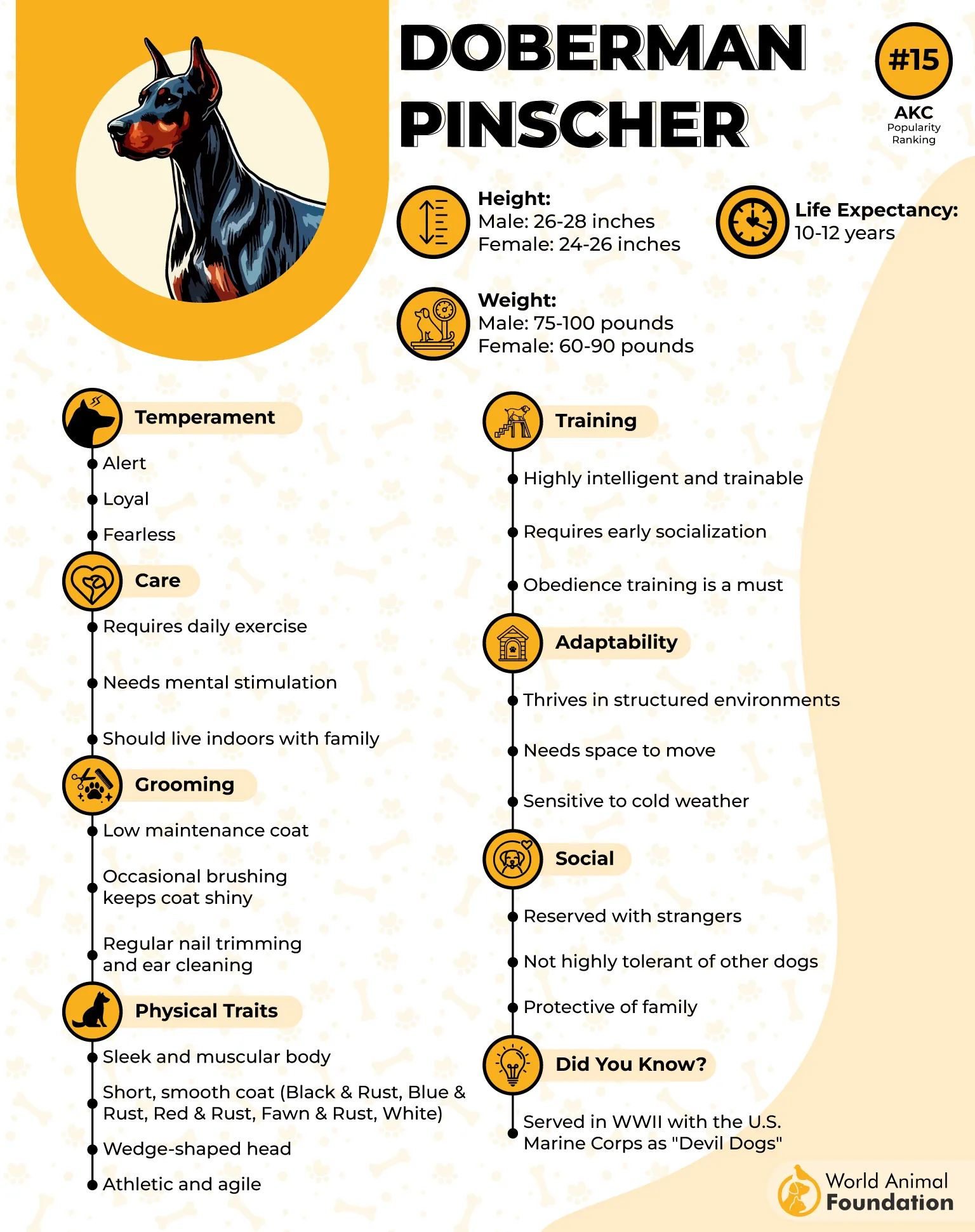
Temperament
Highly alert, energetic, and loyal, these guard dogs form strong attachments to their humans but can be wary or defensive around strangers. Without early training and socialization, their strong guarding instincts can evolve into unwanted aggression, especially if they feel their territory or loved ones are threatened.
Their intense drive and mental acuity require structured outlets, plenty of exercise, purposeful work, and firm, positive reinforcement. An untrained or under-stimulated Doberman may become anxious, reactive, or overly dominant.
Fact: Known for their intimidating presence and fearless nature, Dobermans are compact, muscular dogs with a gleaming coat and swift, graceful movements, widely regarded as one of the finest working guard breeds.
Conclusion
Understanding aggressive dog breeds requires more than looking at appearances or stereotypes, it involves recognizing the roles these dogs were bred to fulfill and the environments they live in. Breeds like the Akita and Doberman Pinscher have historically served as guardians and protectors, making them naturally cautious, bold, and sometimes reactive. With proper training, early socialization, and firm, consistent leadership, even breeds predisposed to dog aggression can become loyal, controlled, and affectionate companions.
However, without responsible ownership, these powerful breeds can pose risks, especially around strangers or other animals. Inadequate training or social neglect can increase the chance of dog bites or, in severe cases, a dog attack. This is why certain breeds have come under legal scrutiny through breed-specific legislation, which aims to reduce public risk but often sparks debate among dog lovers and experts. In the event of a serious incident, seeking advice from a dog bite lawyer may be necessary.
From fighting dogs of the past to loyal family guardians today, even misunderstood breeds like German Shepherds can thrive with the right care. Aggression isn’t about the breed alone, it’s about the bond, training, and responsibility behind every dog.


